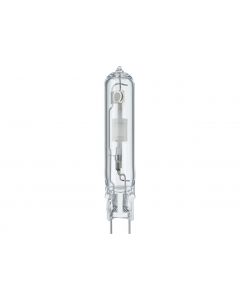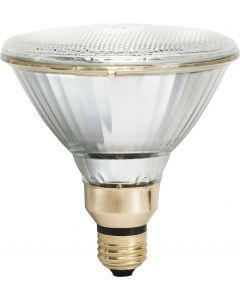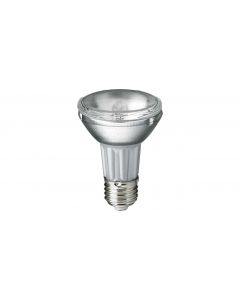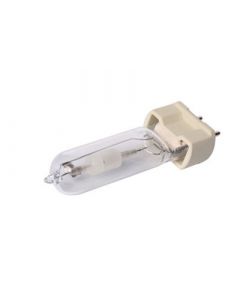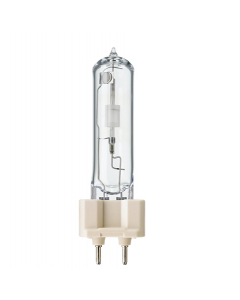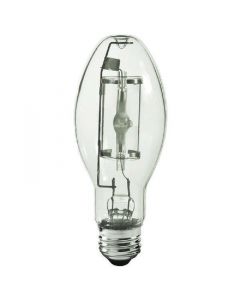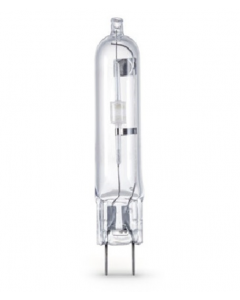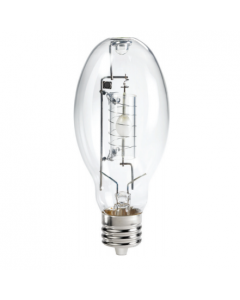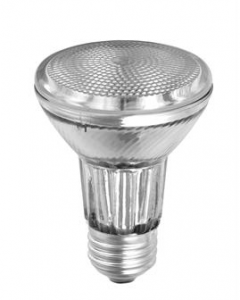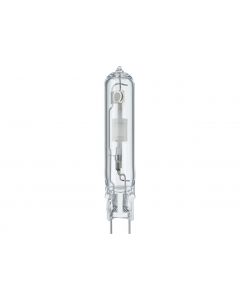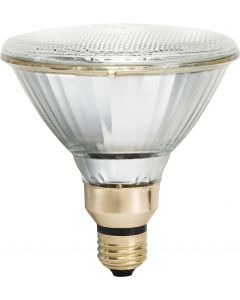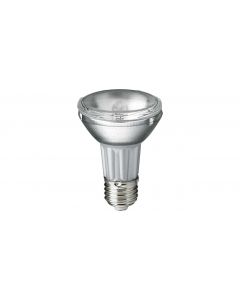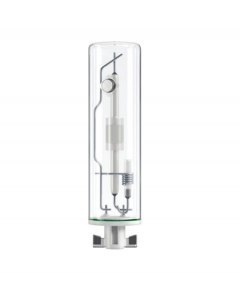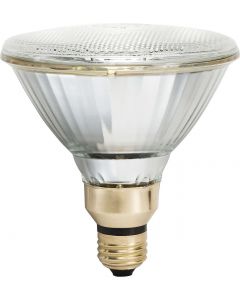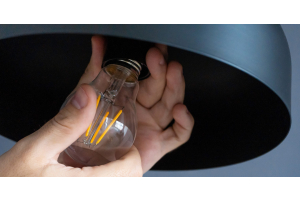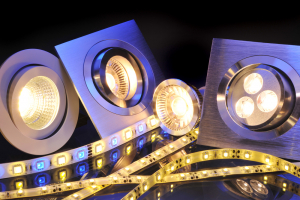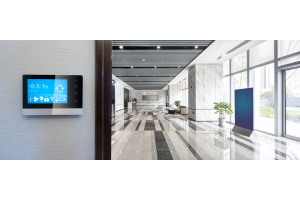Ceramic Metal Halide Lamps
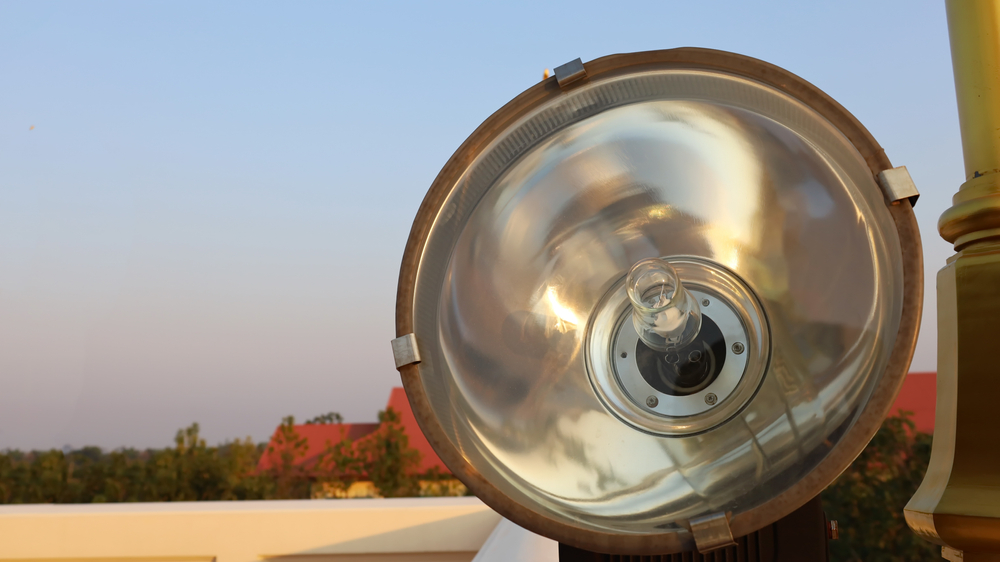
Ceramic Metal Halide Lamps
Ceramic metal halide (CMH) lamps are a high-intensity discharge (HID) lamp similar to traditional metal halide lamps. Metal halide lamps use a combination of pressurized gasses, salts, and metals inside the glass bulb of the lamp to produce light. An electrical current is introduced by an arc tube within the lamp. An arc tube is the ignition source found at the center of all HID lamps. These use an electrical current to heat up and vaporize the materials inside the bulb; producing a wide range of ultraviolet (UV) wavelengths. This creates both visible light and UV radiation similar to that produced by the sun. For this reason, the bulbs of metal halide lamps are covered in a protective layer, known as luminaire, which allows only the desired wavelengths of light to escape. This broad spectrum of light is one of the desirable qualities of metal halide lamps, particularly CMH lamps. Unlike metal halide lamps which use an arc tube made of quartz, CMH lamps use ceramic arc tubes. This seemingly minor change in construction allows for ceramic arc tubes to reach higher operating temperatures than quartz ones. The higher temperatures allow for better efficiency, less maintenance, and a broader spectrum of light.
In addition to the high wattage-to-lumen efficiency common to all HID gas-discharge lamps, CMH lamps are specifically known for their improved color rendering of light. CMH lamps have a higher Color Rendering Index (CRI); meaning that they produce a light that is the most similar to natural, white sunlight. This makes CMH lamps ideal in a variety of usages, from indoor commercial lighting to lamps for plants and reptiles. More specific uses of CMH lamps will be discussed later in this article.
Color Temperature
For more information on CRI and how this affects presentation, refer to the figure below. The color of produced light, also known as temperature, is measured in Kelvin (K). This measurement of the visible light spectrum is where the terms “warm” and “cool” colors come from. Generally, colors measured 5000K and below have more of a yellow/orange tint and are known as “warm colors''. Meanwhile, colors measured 5000K and above have a bluer tint and are known as “cool colors”. As the figure below shows, different lamps can create different color temperatures. At the lower end of the spectrum; high pressure sodium, halogen, incandescent, and fluorescent lamps all tend to have a warmer light temperature. These colors are more desirable for residential lighting as it reduces eye strain and mimics the light of a candle. The cooler colors on the opposite end of the spectrum are found most often in business and commercial lighting. Although modern LEDs can be manufactured to any color temperature, LEDs are most associated with cooler color temperatures found in computer screens. Mercury vapor lamps, a type of HID gas-discharge lamp commonly used in street lights, also tend to have a bluish tint.
Metal halide lamps, on-the-other-hand, occupy the middle of the light temperature spectrum. Metal halide lamps, and specifically CMH lamps, most closely resemble the temperature of sunlight (4,000-5,000K). This color comes from the ionizing process of the materials inside the bulb when exposed to an electrical arc. Thanks to their ceramic arc tube, CMH lamps can reach higher physical temperatures. This allows for both improved light output as well as improved color rendering.
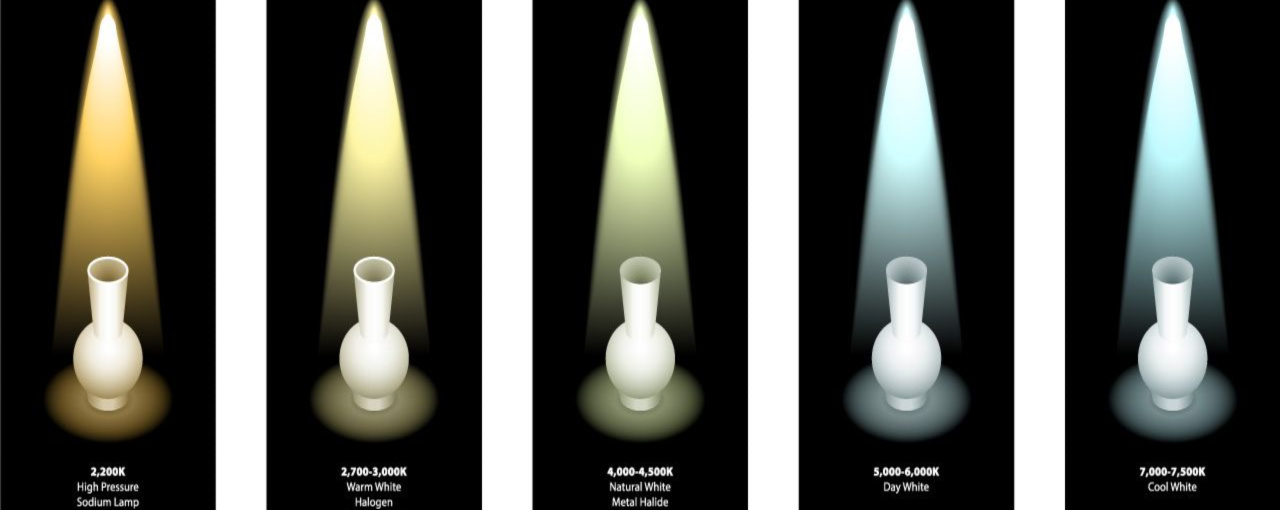

Usage
CMH lamps are best known as the go-to lamp used in horticulture. The higher color rendering index of CMH lamps allows for a healthy spectrum of light that is specifically desirable to plants. In addition to this, the improved efficiency of CMH lamps allows for more consistent light levels and improved lamp lifespan. In comparison to other HID gas-discharge lamps, CMH lamps can maintain a steady light output for twice the expected lifetime of high-pressure sodium and metal halide lamps. While traditional HID gas-discharge lamps tend to last only 10,000 hours before requiring a replacement, CMH lamps can maintain their original brightness for double that amount. This energy efficiency is yet another reason why CMH lamps are so popular for grow lights. Instead of wasting energy as heat or unusable light wavelengths, CMH lamps create a balanced spectrum of light specifically suited for plants.
This balanced spectrum of light also makes these lamps popular for commercial lighting. The superior color rendering of CMH lamps makes them ideal for jewelry displays. The sunlight-like characteristics of the light produced by CMH lamps allow the reflective qualities of diamonds and other jewels to literally dazzle. Many product and art displays use CMH lamps for these same reasons. Beyond accent lighting, CMH lamps can also be found in a variety of applications; from street and architectural lighting to lighting for both aquariums and terrariums.
Depending on the usage, CMH lamps come in a range of wattages and styles. For specialty uses such as accent and display lighting, the 20W, 35/39W, and 70W variants are the best. These are typically small bi-pin, T-Shape bulbs; perfect for placement as product lighting. There are also some PAR and BD/ED-Shape versions for smaller spot lighting. Regardless, these lower wattage CMH lamps produce a significant amount of light without the wattage required of other HID gas-discharge lamps.
For larger spot and overhead lighting, there are also 100W and 150W CMH lamps in PAR and ED-Shape bulbs. Many of the most well-known lighting manufacturers have their own lines of CMH lamps, including GE Lighting, Philips, and Sylvania. And don’t forget to check out our catalog of energy efficient and affordable metal halide ballasts too.
If you have any further questions, please don’t hesitate to contact us at 888-307-3700. We have qualified lighting specialists that will make sure that you get the product that best suits your needs.



